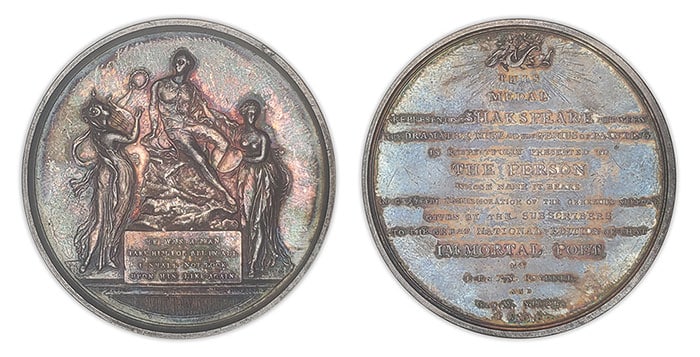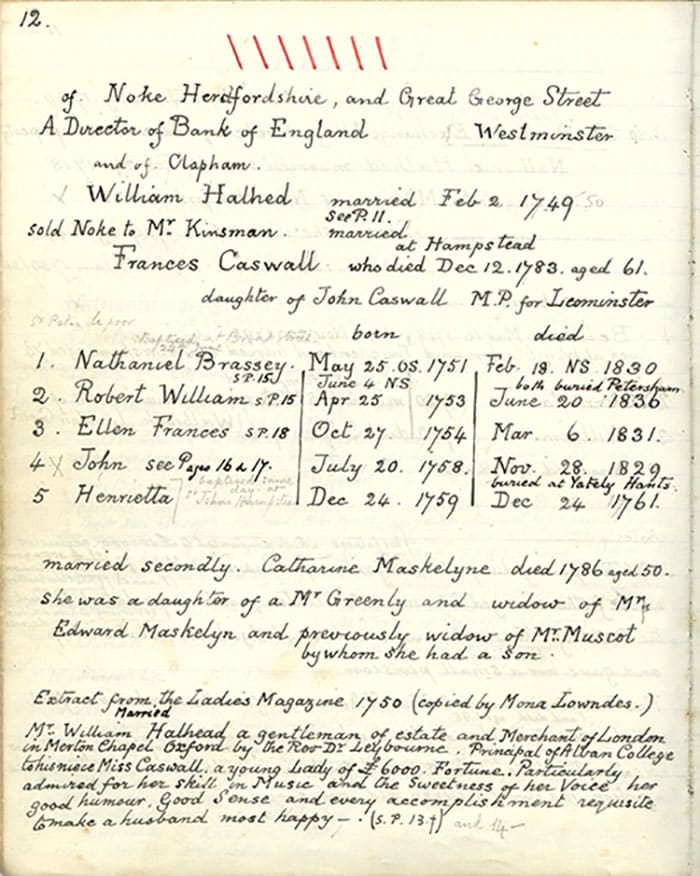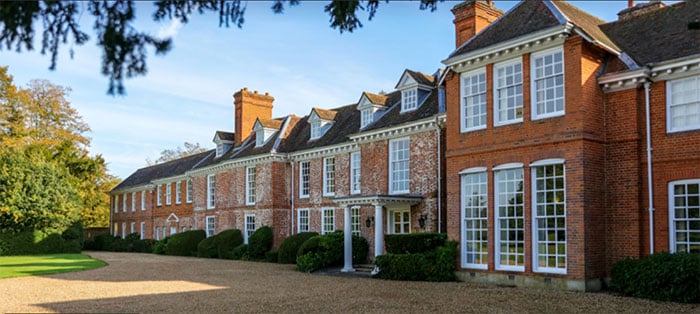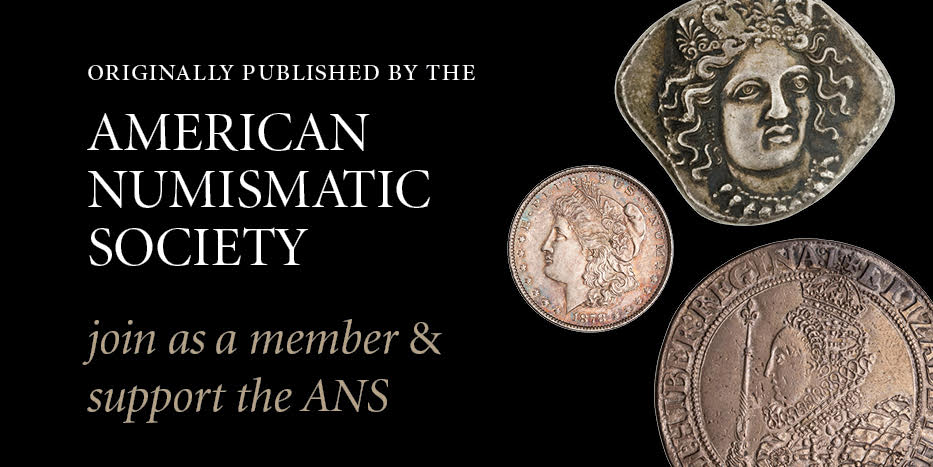By John Thomassen for American Numismatic Society (ANS) ……
One of the more fascinating aspects of the American Numismatic Society’s (ANS) eBay store are the numismatic stories that come with the objects we are privileged to offer.
While every object has a story to tell, we aren’t always privy to the full story, apart from what we know about how they were made, who issued them, and where they circulated generally. But certain specifics—exactly whose hands something passed through, for example—are often lost to time, with the exception of pedigreed objects and the like. However, when the provenance or previous ownership of an item isn’t committed to paper, it is sometimes committed to the object itself in the form of an inscription or engraving.
Such is the case with a silver medal honoring William Shakespeare (or “Shakspeare” as it is spelled on this medal, one of 80 different spelling variations used over the years) inscribed to “John Halhed Esqr.” on the edge. This small fact was noted in our eBay listing and subsequently allowed a living descendant of John Halhed—his 4x great-grandson Michael Halhed—to find the listing using eBay’s saved search functionality, and ultimately win the auction.
First, some background on the medal itself.
The original listing noted that this was a “Beautiful 1803 National Edition of Shakespeare medal in silver” and featured on the obverse “Shakespeare seated on a rock flanked by the Dramatic Muse and the Genius of Painting with HE WAS A MAN TAKE HIM FOR ALL IN ALL I SHALL NOT LOOK UPON HIS LIKE AGAIN” below said rock. On the reverse we find the lengthy inscription “THIS MEDAL REPRESENTING SHAKSPEARE BETWEEN THE DRAMATICK MUSE AND THE GENIUS OF PAINTING IS RESPECTFULLY PRESENTED TO THE PERSON WHOSE NAME IT BEARS IN GRATEFUL COMMEMORATION OF THE GENEROUS SUPPORT GIVEN BY THE SUBSCRIBERS TO THE GREAT NATIONAL EDITION OF THAT IMMORTAL POET I.I. & J.N. BOYDELL AND G. & W. NICOL. 1803″—providing us with a great wealth of information about this medal, why it was issued, and who would have received it.
At 48 mm, the medal was designed by Conrad Heinrich Küchler (c. 1740–1810), a German engraver who worked for Matthew Boulton at his famous Soho Mint. For many years, Küchler was the sole artist employed in designing and die-cutting the many coins, medals, and tokens produced by the Soho Mint – including the one pence and two pence “cartwheel” coppers of George III. Credit must also be given to Thomas Banks (1735–1805), who sculpted the monumental Shakespeare attended by Painting and Poetry (c. 1789) that Küchler used as the basis for his obverse design.
A gold example housed at the British Museum contains the following curatorial note:
“There are gold and silver examples of this medal in the British Museum, that in gold having been presented to George III. The name of the recipient is engraved on the edge of the medal whilst others are inscribed in impressed capitals: STRUCK IN THE MINT OF M . BOULTON. The flans vary slightly in thickness. There is a trial striking of the obverse die in bronzed lead in the Birmingham Museum and Art Gallery. Because of delays in striking the medals they were not available to subscribers until 1805.”
In order to understand who commissioned this medal and why it would be issued to a named individual, we must first turn to a gentleman by the name of John Boydell, an engraver and printer whose grand vision to open the Boydell Shakespeare Gallery in London also led to the development of an illustrated edition of Shakespeare’s plays together with a folio of prints.
While the gallery itself was relatively successful, the print venture was not, leaving Boydell and his business partners in the project (his nephew Josiah Boydell and London booksellers George and William Nicol) somewhat in the lurch. The illustrated edition was meant to come out as separate volumes over time and thus employed a subscription model to attract customers. A combination of poor record-keeping, long wait-times between volumes, and a hodgepodge of different paintings and illustrations for the folio and illustrated edition done by a multitude of artists with varying levels of technical proficiency (and no stylistic cohesion) resulted in a dwindling number of subscriptions, and the ultimate collapse of the project. In an effort to further entice would-be subscribers, a silver medal was issued, to be engraved with the name of the subscriber, thus resulting in the present medal sold on eBay.
With the historical background of this medal sufficiently covered, let’s turn our attention to the recipient, John Halhed.
Son of William Halhed and brother to Nathaniel Brassey Halhed (a rather interesting character in his own right), John would have been almost 50 years old when he was presented his subscriber medal, based on information provided by auction winner Michael Halhed. Mike generously shared a wealth of knowledge about his 4x great grandfather John Halhed, including photos of select pages from their handwritten family tree compiled in the 1800s.
Presented below is a brief retelling of the story written by Mike in his own words. The American Numismatic Society thanks him for sharing his story with the ANS and our readers. Enjoy!
Hobbies such as numismatics and philately have shifted slightly over the past 20 years with the broad adoption of the internet and online sites such as eBay, the United States Mint website, and of course the website of the American Numismatic Society. At the same time, interest in genealogy has exploded as Baby Boomers retire and want to know more about their past. Websites such as Ancestry.com and numerous online platforms have helped drive access to even more material than would have been available just a few decades ago. Is there an intersection between these hobbies? Funny that you should ask!
The ANS recently sold a silver Shakespeare medal dated 1803 via eBay (see Figure 1). In order to encourage subscriptions to the “great national edition of that immortal poet,” the publishers hired C. H. Küchler to make and then engrave the name of the subscribers around the edge of these 1803 medallions. In this case, the engraving displayed the name of John Halhed, Esq.

John Halhed was born in 1758 to William Halhed, who was a Director at the Bank of England. He in turn worked at Lloyds Coffee House, a precursor to Lloyds of London, and became quite wealthy, living in a 17,000 sq. foot estate named Yately Hall (see Figure 3) in Hants, England with his wife Anna Maria Caswall and their 18 children. The Halheds and Caswalls were quite generous, and according to Halhed genealogical records shown below (see Figure 2), in 1809 at the Jubilee of George III, their families gave a shilling to every man, woman, and child in the Yately Parish.


Although John had a large family (see Figure 3 for a modern picture of Yately Hall, now called Hurst Lodge School), the male lineage has been quite unsuccessful as the result of disease, mortal injury (death by a lion, death by a cricket ball, etc.), and war, including most recently in WWII. This paucity of Halheds (check your local phone book—there are likely none!), plus the family’s minor historical wealth, makes genealogical research and the collecting of family artifacts relatively easy via numerous online platforms, and by using basic website searches.

The American Numismatic Society is pleased to announce that the Shakespeare medal shown above is now back in Halhed family hands, joining letters (including a stamp-less letter sent from Australia to England in 1843 from one of John’s sons, sent to a cousin), postcards, a pocket watch mechanism from the early 1700s, paintings, sketches, and several books. eBay and other auction sites have expanded and combined collecting interests to create a new generation of hobbyists who enjoy many aspects of history.
—Michael Halhed
* * *





